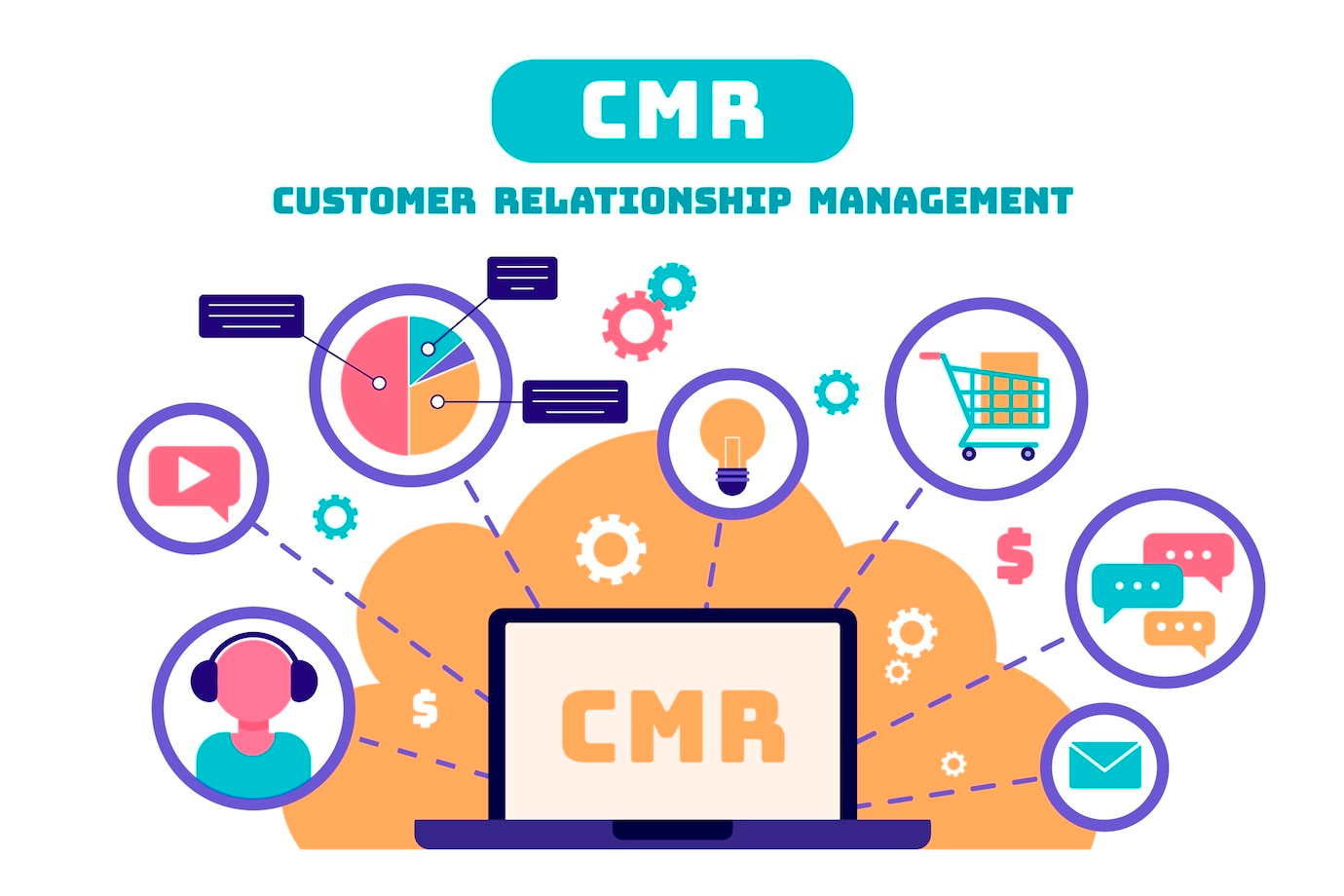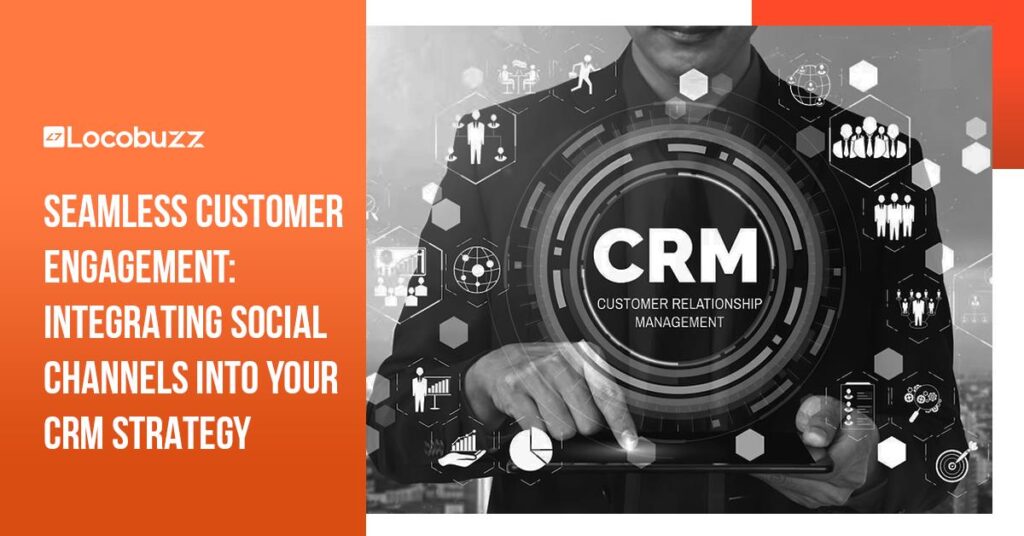
The Power of Two: Why CRM Integration with WordPress Matters
In today’s digital landscape, businesses are constantly seeking ways to streamline their operations, enhance customer relationships, and boost overall efficiency. Two powerful tools that often sit at the heart of these efforts are Customer Relationship Management (CRM) systems and WordPress websites. While both are incredibly valuable on their own, their true potential is unlocked when they work together. This is where CRM integration with WordPress comes into play, offering a synergistic approach to managing your business and engaging with your audience.
Imagine a world where your website isn’t just a static brochure, but a dynamic hub that feeds directly into your CRM, providing real-time insights into customer behavior, preferences, and interactions. This is the reality that CRM integration with WordPress makes possible. By seamlessly connecting these two platforms, you can:
- Capture Leads Effortlessly: Turn website visitors into qualified leads by automatically capturing their information through forms, surveys, and other interactive elements.
- Personalize Customer Experiences: Tailor your website content, offers, and interactions based on the data stored in your CRM, creating a more engaging and relevant experience for each individual.
- Automate Marketing and Sales Processes: Automate tasks like email marketing, lead nurturing, and sales follow-ups, saving time and resources while improving efficiency.
- Gain a 360-Degree View of Your Customers: Access a comprehensive view of each customer’s journey, from initial website visit to purchase and beyond, enabling you to make data-driven decisions.
- Improve Customer Service: Provide faster, more personalized support by having access to customer data and interaction history within your WordPress dashboard.
In essence, CRM integration with WordPress is about creating a unified ecosystem that puts your customers at the center of your business strategy. It’s about breaking down silos, improving communication, and empowering your team to deliver exceptional experiences.
Understanding the Fundamentals: CRM and WordPress Demystified
Before diving into the specifics of integration, let’s briefly define the core concepts:
What is a CRM?
A CRM (Customer Relationship Management) system is a software solution designed to manage and analyze customer interactions and data throughout the customer lifecycle. It helps businesses build stronger relationships with their customers, improve customer retention, and drive sales growth. Key features of a CRM include:
- Contact Management: Storing and organizing customer contact information, including names, addresses, phone numbers, and email addresses.
- Lead Management: Tracking and nurturing leads through the sales pipeline.
- Sales Automation: Automating sales tasks, such as email campaigns and follow-ups.
- Marketing Automation: Automating marketing activities, such as email marketing and social media management.
- Reporting and Analytics: Providing insights into customer behavior, sales performance, and marketing effectiveness.
What is WordPress?
WordPress is a popular open-source content management system (CMS) that allows users to create and manage websites and blogs. It’s known for its user-friendly interface, flexibility, and extensive library of themes and plugins. WordPress empowers businesses of all sizes to establish an online presence, share information, and engage with their audience. Key features of WordPress include:
- Ease of Use: Intuitive interface that allows users to create and manage content without requiring coding knowledge.
- Flexibility: Supports a wide range of website types, from simple blogs to complex e-commerce platforms.
- Themes and Plugins: Offers a vast library of themes and plugins to customize the appearance and functionality of your website.
- SEO-Friendly: Designed to be search engine optimized, helping your website rank higher in search results.
- Community Support: Boasts a large and active community that provides support and resources.
The synergy between a CRM and WordPress lies in their complementary strengths. WordPress excels at content creation, website design, and user engagement, while a CRM excels at managing customer data, sales processes, and marketing automation. Integrating these two platforms creates a powerful combination that can transform your business.
The Benefits of CRM Integration with WordPress: A Deep Dive
The advantages of integrating your CRM with WordPress are numerous and far-reaching. Let’s explore some of the key benefits in detail:
Enhanced Lead Generation and Management
One of the most significant benefits of CRM integration is the ability to streamline lead generation and management. By connecting your WordPress website to your CRM, you can:
- Capture Leads Automatically: Capture lead information directly from website forms, such as contact forms, registration forms, and newsletter sign-up forms. This eliminates the need for manual data entry and reduces the risk of errors.
- Track Lead Behavior: Monitor lead activity on your website, such as page views, downloads, and form submissions, providing valuable insights into their interests and needs.
- Qualify Leads Effectively: Automatically qualify leads based on their behavior and demographics, allowing you to prioritize your sales efforts.
- Nurture Leads with Targeted Content: Send targeted email campaigns and personalized content to nurture leads through the sales funnel, increasing the likelihood of conversion.
This integrated approach allows you to move leads through the sales pipeline more efficiently, improving your conversion rates and ultimately driving revenue growth.
Personalized Customer Experiences
Personalization is key to providing exceptional customer experiences. CRM integration with WordPress enables you to personalize your website content and interactions based on customer data stored in your CRM. This can include:
- Personalized Content: Display different content, offers, and promotions to different segments of your audience based on their demographics, interests, and past interactions.
- Dynamic Content: Use dynamic content to personalize website elements, such as headlines, images, and calls to action, based on customer data.
- Targeted Email Campaigns: Send targeted email campaigns to specific customer segments, delivering relevant content and offers.
- Improved Customer Service: Provide faster, more personalized support by having access to customer data and interaction history within your WordPress dashboard.
By personalizing the customer experience, you can increase engagement, build stronger relationships, and foster customer loyalty.
Automated Marketing and Sales Processes
CRM integration with WordPress allows you to automate many of your marketing and sales processes, saving time and resources while improving efficiency. This can include:
- Automated Email Marketing: Send automated email campaigns, such as welcome emails, lead nurturing emails, and promotional emails, based on customer behavior and demographics.
- Automated Sales Follow-ups: Automate sales follow-ups, such as sending reminders, scheduling appointments, and tracking sales progress.
- Lead Scoring and Prioritization: Automatically score leads based on their behavior and demographics, allowing you to prioritize your sales efforts.
- Workflow Automation: Automate various tasks, such as assigning leads to sales representatives, updating customer records, and triggering notifications.
Automation streamlines your marketing and sales processes, freeing up your team to focus on more strategic initiatives.
Improved Data Analysis and Reporting
CRM integration provides a centralized repository of customer data, making it easier to analyze your marketing and sales performance and make data-driven decisions. You can:
- Track Key Metrics: Track key metrics, such as lead generation, conversion rates, customer acquisition cost, and customer lifetime value.
- Generate Reports: Generate reports to gain insights into your marketing and sales performance, identify trends, and measure the effectiveness of your campaigns.
- Make Data-Driven Decisions: Use data to make informed decisions about your marketing and sales strategies, optimizing your efforts for maximum impact.
- Gain a 360-Degree View of Your Customers: Access a comprehensive view of each customer’s journey, from initial website visit to purchase and beyond, enabling you to understand their behavior and preferences.
Data analysis and reporting provide valuable insights that can help you improve your marketing and sales performance and drive business growth.
Enhanced Customer Service
CRM integration with WordPress can significantly improve your customer service capabilities. By integrating the two platforms, you can:
- Access Customer Data: Access customer data, such as contact information, purchase history, and support interactions, directly within your WordPress dashboard.
- Provide Personalized Support: Provide faster, more personalized support by having access to customer data and interaction history.
- Track Support Tickets: Track support tickets and manage customer inquiries efficiently.
- Improve Customer Satisfaction: Improve customer satisfaction by providing faster, more personalized support.
This integrated approach allows you to provide exceptional customer service, fostering customer loyalty and driving repeat business.
Choosing the Right Integration Method: Options and Considerations
There are several methods for integrating your CRM with WordPress, each with its own advantages and disadvantages. The best method for you will depend on your specific needs, technical expertise, and budget. Here are the most common options:
Plugins
WordPress plugins are the most common and often the easiest way to integrate your CRM. There are numerous CRM plugins available in the WordPress plugin directory, each offering different features and integrations. Some popular CRM plugins for WordPress include:
- HubSpot for WordPress: A free plugin that integrates with HubSpot’s CRM, providing lead capture forms, contact management, and marketing automation features.
- WPForms: A popular form builder plugin that integrates with various CRMs, allowing you to capture leads and submit form data to your CRM.
- Ninja Forms: Another popular form builder plugin that offers CRM integrations, allowing you to capture leads and submit form data to your CRM.
- FluentCRM: A self-hosted CRM plugin designed specifically for WordPress, offering features like contact management, email marketing, and automation.
Pros of using plugins:
- Ease of Use: Plugins are generally easy to install and configure, even for users with limited technical expertise.
- Cost-Effectiveness: Many plugins offer free versions with basic features, making them a cost-effective option for small businesses.
- Wide Range of Options: There are numerous plugins available, offering a wide range of features and integrations.
Cons of using plugins:
- Limited Customization: Plugins may have limited customization options, and you may not be able to tailor the integration to your specific needs.
- Compatibility Issues: Plugins may not be compatible with all CRM systems or WordPress themes.
- Performance Impact: Some plugins can impact the performance of your website, especially if they are poorly coded or have conflicting features.
APIs (Application Programming Interfaces)
APIs provide a more flexible and powerful way to integrate your CRM with WordPress. APIs allow you to connect your CRM to your WordPress website directly, enabling you to access and exchange data between the two platforms. This method typically requires some coding knowledge or the assistance of a developer.
Pros of using APIs:
- Flexibility: APIs offer a high degree of flexibility, allowing you to customize the integration to your specific needs.
- Full Control: You have full control over the integration process, allowing you to access and manipulate data in any way you need.
- Advanced Features: APIs can enable advanced features, such as real-time data synchronization and custom workflows.
Cons of using APIs:
- Technical Expertise Required: APIs require some coding knowledge or the assistance of a developer.
- Time-Consuming: Integrating with APIs can be time-consuming, as it involves writing code and testing the integration.
- Maintenance: You may need to maintain the integration over time, as the API specifications of your CRM or WordPress may change.
Zapier and Other Integration Platforms
Zapier and other integration platforms provide a no-code or low-code way to connect your CRM with WordPress. These platforms act as a bridge between different applications, allowing you to automate tasks and exchange data without writing code. They typically offer a user-friendly interface and pre-built integrations with a wide range of applications.
Pros of using integration platforms:
- Ease of Use: Integration platforms are generally easy to use, even for users with limited technical expertise.
- No Coding Required: You don’t need to write any code to set up the integration.
- Wide Range of Integrations: Integration platforms offer pre-built integrations with a wide range of applications, including many CRMs and WordPress plugins.
Cons of using integration platforms:
- Cost: Integration platforms often have a monthly subscription fee.
- Limited Customization: You may have limited customization options, and you may not be able to tailor the integration to your specific needs.
- Dependency on the Platform: You are dependent on the integration platform to maintain the integration.
When choosing an integration method, consider the following factors:
- Your technical expertise: Do you have coding knowledge, or will you need to rely on a developer?
- Your budget: How much are you willing to spend on the integration?
- Your specific needs: What features and integrations do you need?
- Your CRM and WordPress setup: Does your CRM have an API, or is it better suited for plugin integrations?
Step-by-Step Guide to CRM Integration with WordPress
While the specific steps for integrating your CRM with WordPress will vary depending on the chosen method, here’s a general guide to get you started:
1. Choose Your CRM and WordPress Plugin or Integration Method
Select the CRM system and WordPress plugin or integration method that best fits your needs and budget. Research different options and consider factors like ease of use, features, and compatibility.
2. Install and Configure the Plugin or Set Up the Integration
If you’re using a plugin, install it from the WordPress plugin directory and activate it. If you’re using an API or integration platform, follow the instructions provided to set up the connection between your CRM and WordPress website. This may involve entering API keys, configuring settings, and mapping data fields.
3. Create Forms and Capture Lead Information
Use a form builder plugin or the built-in form features of your chosen method to create forms on your WordPress website. These forms should capture lead information, such as name, email address, phone number, and any other relevant details. Ensure that the form fields are mapped to the corresponding fields in your CRM.
4. Test the Integration
Test the integration by submitting a test form and verifying that the data is correctly captured and stored in your CRM. Check for any errors or issues and troubleshoot them as needed.
5. Customize and Optimize the Integration
Customize the integration to meet your specific needs. This may involve setting up workflows, creating custom fields, and personalizing the user experience. Optimize the integration to ensure that it runs smoothly and efficiently.
6. Monitor and Maintain the Integration
Regularly monitor the integration to ensure that it’s working correctly. Check for any errors or issues and troubleshoot them promptly. Keep the plugin or integration platform updated to ensure compatibility and security.
By following these steps, you can successfully integrate your CRM with WordPress and unlock the full potential of these two powerful platforms.
Best Practices for Successful CRM Integration with WordPress
To maximize the benefits of CRM integration with WordPress, follow these best practices:
- Plan Ahead: Before you start the integration process, take the time to plan your strategy. Define your goals, identify your target audience, and determine the specific data you want to capture and share between your CRM and WordPress.
- Choose the Right Tools: Select the CRM and WordPress plugins or integration methods that best fit your needs and budget. Consider factors like ease of use, features, and compatibility.
- Map Data Fields Carefully: Ensure that you map the data fields in your WordPress forms to the corresponding fields in your CRM. This will ensure that the data is correctly captured and stored.
- Test Thoroughly: Test the integration thoroughly to ensure that it’s working correctly. Submit test forms and verify that the data is correctly captured and stored in your CRM.
- Personalize the User Experience: Use the integration to personalize the user experience on your website. Display different content, offers, and promotions to different segments of your audience.
- Automate Tasks: Automate tasks, such as email marketing, lead nurturing, and sales follow-ups, to save time and resources.
- Monitor and Analyze Results: Regularly monitor and analyze your results to measure the effectiveness of your CRM integration. Track key metrics, such as lead generation, conversion rates, and customer acquisition cost.
- Train Your Team: Train your team on how to use the CRM and WordPress integration effectively. This will ensure that everyone is on the same page and can make the most of the integrated system.
- Keep Your Systems Updated: Regularly update your CRM, WordPress, and any plugins or integration platforms to ensure compatibility and security.
- Seek Expert Help: If you’re not confident in your technical skills, consider seeking help from a developer or consultant. They can help you set up and maintain the integration effectively.
By following these best practices, you can ensure that your CRM integration with WordPress is successful and delivers the desired results.
Real-World Examples: CRM Integration in Action
To illustrate the practical benefits of CRM integration with WordPress, let’s look at a few real-world examples:
Example 1: E-commerce Business
An e-commerce business uses its WordPress website to showcase and sell its products. By integrating its CRM with WordPress, the business can:
- Capture Customer Data: Capture customer data, such as contact information, purchase history, and browsing behavior, through website forms and order tracking.
- Personalize Product Recommendations: Personalize product recommendations based on customer purchase history and browsing behavior.
- Automate Email Marketing: Send automated email campaigns, such as welcome emails, abandoned cart emails, and promotional emails, to customers.
- Improve Customer Service: Provide faster, more personalized support by having access to customer data and interaction history within the WordPress dashboard.
As a result, the business experiences increased sales, improved customer loyalty, and a more streamlined customer experience.
Example 2: Service-Based Business
A service-based business uses its WordPress website to generate leads and book appointments. By integrating its CRM with WordPress, the business can:
- Capture Leads: Capture leads through website forms, such as contact forms and appointment booking forms.
- Track Lead Activity: Track lead activity on the website, such as page views and form submissions.
- Nurture Leads: Nurture leads through targeted email campaigns and personalized content.
- Automate Appointment Scheduling: Automate appointment scheduling and send reminders to customers.
As a result, the business experiences increased lead generation, improved conversion rates, and more efficient appointment scheduling.
Example 3: Non-Profit Organization
A non-profit organization uses its WordPress website to raise donations and engage with its supporters. By integrating its CRM with WordPress, the organization can:
- Capture Donor Data: Capture donor data, such as contact information and donation history, through donation forms.
- Personalize Communication: Personalize communication with donors based on their donation history and interests.
- Automate Thank-You Emails: Send automated thank-you emails to donors.
- Track Fundraising Efforts: Track fundraising efforts and measure the effectiveness of campaigns.
As a result, the organization experiences increased donations, improved donor engagement, and more efficient fundraising efforts.
These are just a few examples of how CRM integration with WordPress can benefit businesses and organizations of all types. The specific benefits will vary depending on the specific needs and goals of each organization.
Troubleshooting Common Issues
Even with careful planning and execution, you may encounter some common issues when integrating your CRM with WordPress. Here are some troubleshooting tips:
- Data Not Syncing: If data is not syncing between your CRM and WordPress, check the following:
- API Keys: Verify that your API keys are entered correctly and that the API is enabled.
- Field Mapping: Double-check that the data fields are mapped correctly between the two platforms.
- Plugin Conflicts: Disable other plugins one by one to see if they are interfering with the integration.
- Permissions: Ensure that your user account has the necessary permissions to access and modify data in both systems.
- Form Submissions Not Working: If form submissions are not working, check the following:
- Form Settings: Verify that the form settings are configured correctly, including the destination email address and the submission confirmation message.
- Spam Filters: Check your spam filters to see if form submissions are being blocked.
- Plugin Conflicts: Disable other plugins one by one to see if they are interfering with the form submissions.
- Website Performance Issues: If your website performance is slow after integrating your CRM, consider the following:
- Plugin Optimization: Optimize the plugin by disabling unnecessary features or using a lightweight alternative.
- Caching: Use a caching plugin to improve website performance.
- Hosting: Upgrade your hosting plan to a more powerful one if needed.
- Security Concerns: If you have security concerns, consider the following:
- Security Plugins: Use a security plugin to protect your website from malware and other threats.
- Regular Updates: Keep your CRM, WordPress, and any plugins or integration platforms updated to ensure security.
- Strong Passwords: Use strong passwords for all your accounts.
- Artificial Intelligence (AI) and Machine Learning (ML): AI and ML will play an increasingly important role in CRM integration, enabling more sophisticated lead scoring, personalization, and automation.
- Voice Integration: Voice integration will become more prevalent, allowing users to interact with their CRM and WordPress websites using voice commands.
- Mobile Optimization: Mobile optimization will continue to be a priority, as more and more users access websites and CRM systems on their mobile devices.
- Enhanced Security: Security will continue to be a major focus, with new security features and protocols being developed to protect customer data.
- No-Code/Low-Code Solutions: No-code and low-code solutions will continue to grow in popularity, making CRM integration more accessible to users with limited technical expertise.
If you’re still experiencing issues, consult the documentation for your CRM and WordPress plugin or integration platform. You can also seek help from a developer or consultant.
The Future of CRM Integration with WordPress
The integration of CRM with WordPress is an evolving landscape, and we can expect to see further advancements in the future. Here are some trends to watch:
These trends indicate that CRM integration with WordPress will become even more powerful and versatile in the years to come, helping businesses of all sizes to thrive in the digital age.
Conclusion: Embracing the Power of Integration
CRM integration with WordPress is a game-changer for businesses seeking to optimize their operations, enhance customer relationships, and drive growth. By seamlessly connecting these two powerful platforms, you can capture leads, personalize customer experiences, automate marketing and sales processes, gain valuable insights, and improve customer service.
Whether you’re a small business owner, a marketing professional, or a sales leader, embracing CRM integration with WordPress is a strategic move that can transform your business. By following the best practices outlined in this guide, you can successfully integrate your CRM with WordPress and unlock the full potential of these two powerful tools. Don’t wait – start exploring the possibilities today and experience the power of seamless integration!


